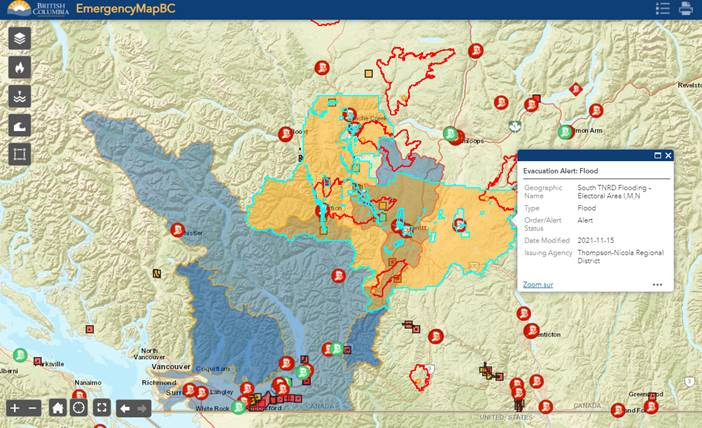Following unusually heavy rainfalls and the increased risks of flooding and mudslides across large parts of British Columbia, MiningWatch Canada is concerned about the risk of catastrophic mine waste dam failures and contaminated mine waste spills. MiningWatch is especially concerned about the mine waste sites located within or in close vicinity of the current ‘Evacuating Alert Flooding Zone,’ and urge BC authorities to pay close attention to those sites, including but not limited to:
- Highland Valley Copper Mine (operating, Teck, dam failure risk)
- Giant Nickel Pride of Emory Mine (closed / abandoned, acid drainage risk)
- Brenda Mine (closed/abandoned)
Currently, there are over 100 active tailings dams across the province of British Columbia. MiningWatch's Canada Program Coordinator Ugo Lapointe joined CBC Vancouver Daybreak on November 18 to talk about the threats of breaches and spills.
For each of these sites, mining operators build dams or dikes to retain large volumes of mine waste or tailings. Typically, when those structures are built correctly, they have freeboards to allow for increased levels of water retention behind the dams or dikes. But obviously, with high precipitation or extreme events, there needs to be a close watch of that freeboard to make sure there's no breach or spill. That could be quite damaging — physically, but also chemically. The more immediate threat to watch for is the sheer physical force of those breaches and spills. We’ve seen situations in the past — Mount Polley was the obvious one in British Columbia in 2014. One of the factors was that water levels were too high behind the dam, and then the dam also slipped — literally lowered —because of foundation issues. Both situations combined led to 24 billion litres of muddy water flowing downstream and destroying 10 kilometres of forest before being dumped into Quesnel lake...
These structures are built to be there forever. Not for a decade. Not for a century. But for millenia. It’s hard to comprehend on our human scale...We should be asking our BC authorities to have operators build those structures to the highest of standards, even if they cost more money. It means that maybe some mines won't be able to go ahead because it's going to be too costly. But we're talking about the safety of people and the environment. — Ugo Lapointe, Canada Program Coordinator for MiningWatch Canada


